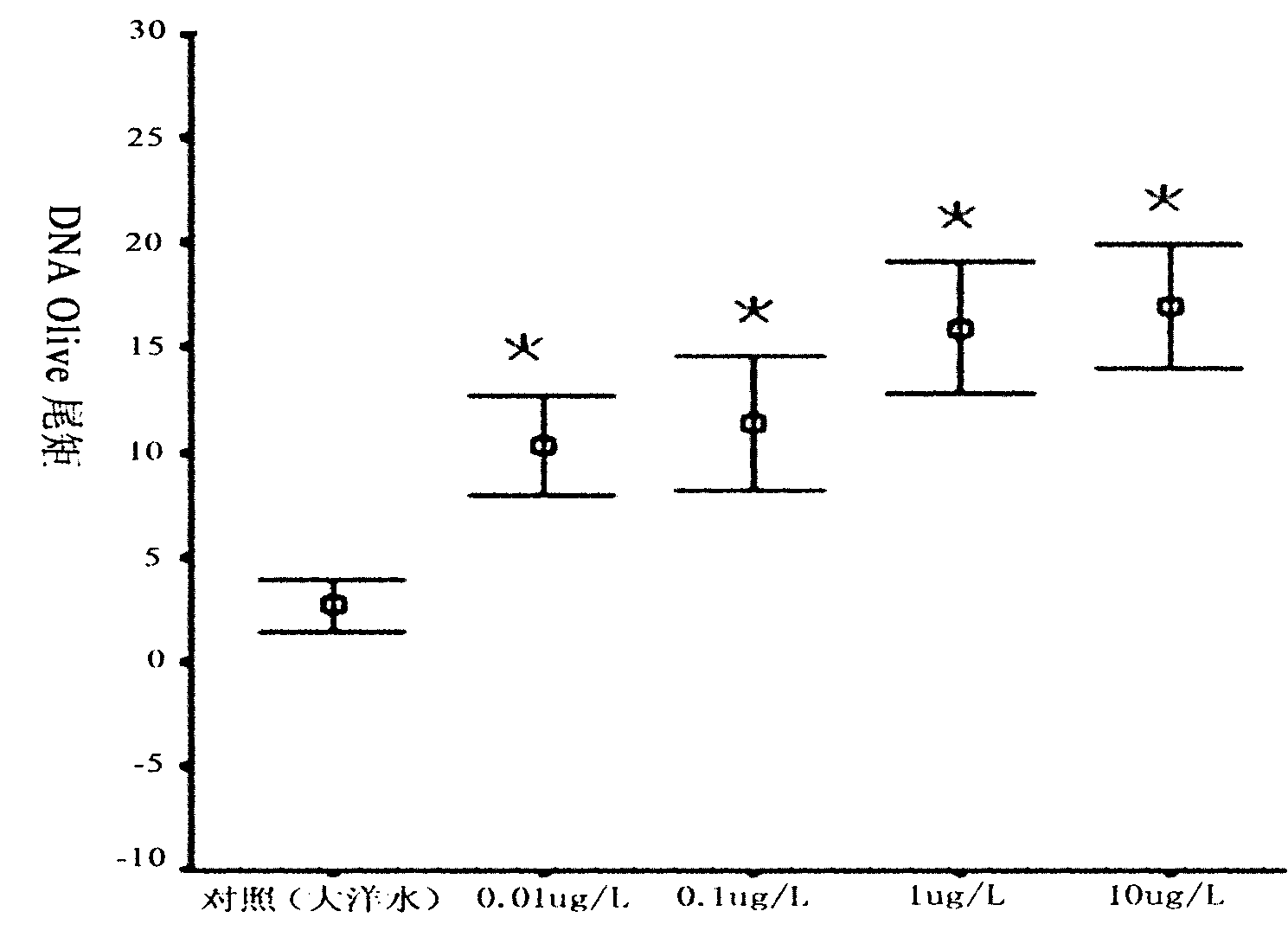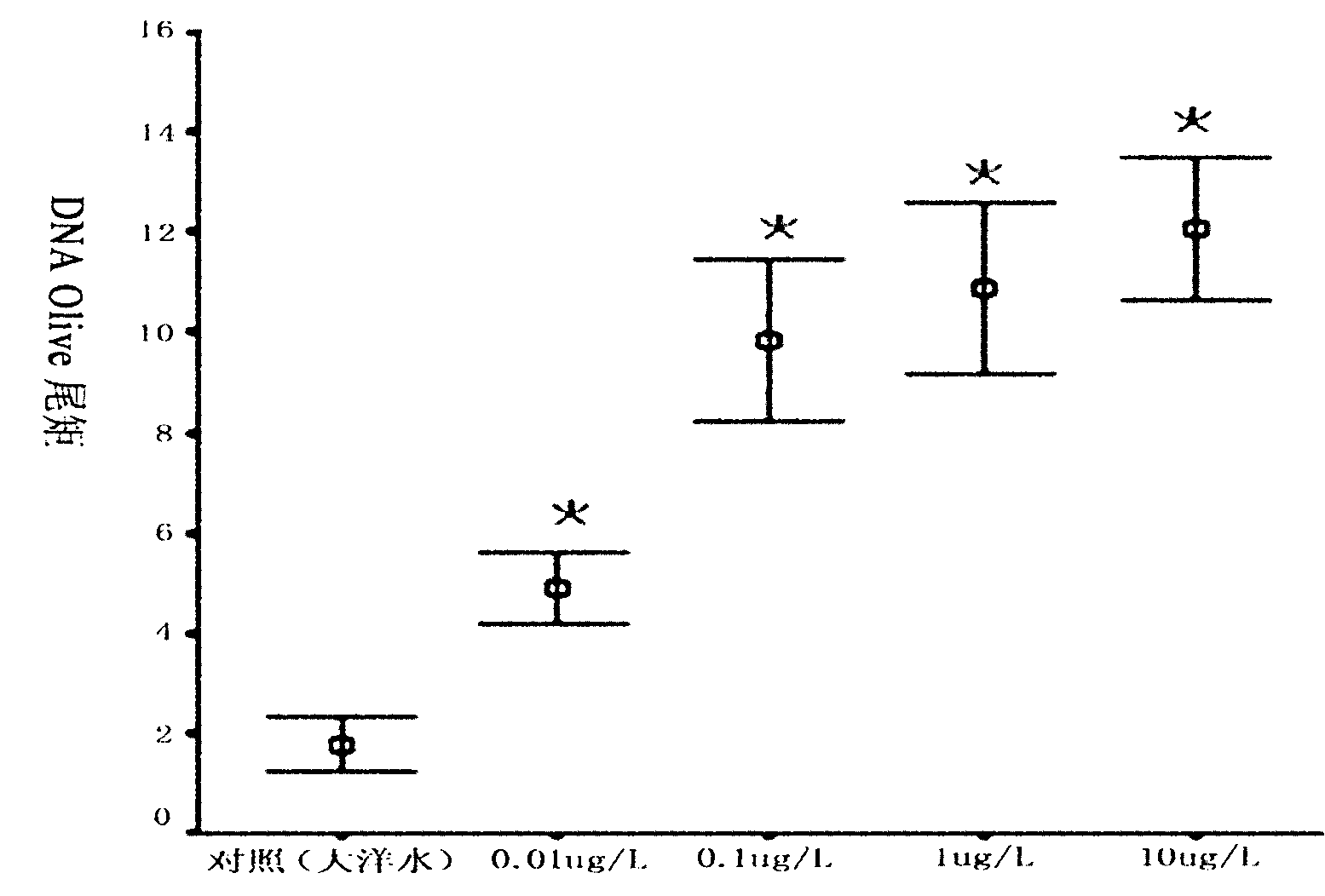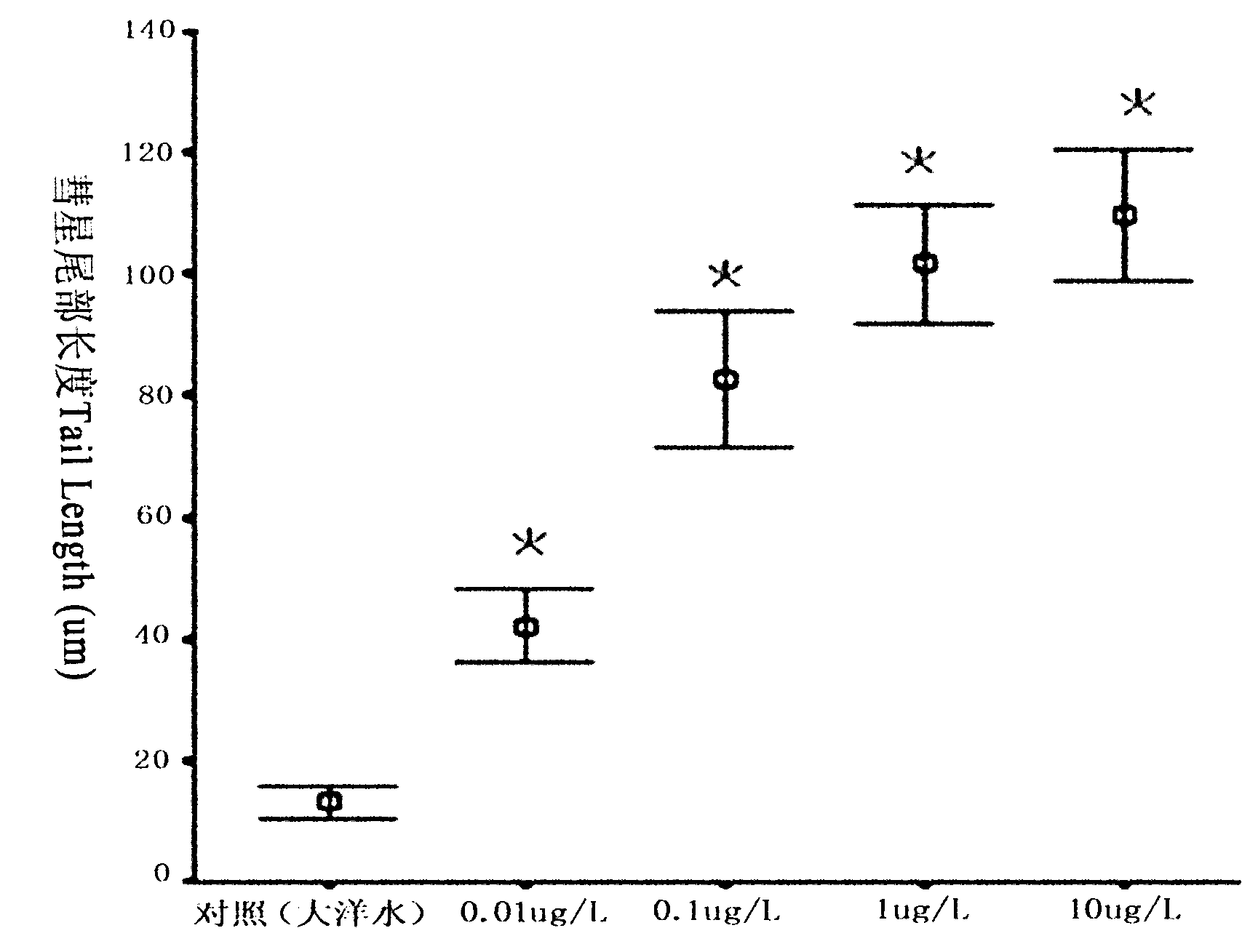Method for detecting potential genetic toxicity of organic pollutant in seawater
A technology of organic pollutants and detection methods, which is applied in the field of detection of potential genotoxicity of organic pollutants in seawater, can solve the problems of water environment damage, long retention time of persistent organic pollutants, and difficulty in degradation, and achieves simplified operation steps. Effect
- Summary
- Abstract
- Description
- Claims
- Application Information
AI Technical Summary
Problems solved by technology
Method used
Image
Examples
Embodiment 1
[0025] Example 1 The specific implementation of the present invention takes the detection of the potential genotoxicity of the organic pollutant pyrene (Pyrene) dissolved in seawater at a known concentration as an example.
[0026] Take 1mL of pyrene (Pyrene) stock solution with a concentration of 100ug / L, and use 4999mL of sterile ocean water to prepare a positive seawater sample of 0.02ug / L.
[0027] 1) Extraction and concentration of organic pollutants in seawater: extract positive seawater samples with a concentration of 0.02ug / L by liquid-liquid extraction (Liquid-Liquid extraction, LLE) and solid phase extraction (Solid phase extraction, SPE) organic pollutants in seawater, and anhydrous Na 2 SO 4 Dry the column, rinse with dichloromethane to obtain an eluent, blow the eluent to dryness with nitrogen, and finally dissolve it with 1ml of dimethylsulfoxide (DMSO) to obtain an organic concentrate with a concentration of 100ug / L;
[0028] 2) Cell collection and enrichment ...
Embodiment 2
[0038] The detection of embodiment 2 seawater sample
[0039] Examination of the potential genotoxicity of organic pollutants in seawater taken from the Jiaozhou Bay aquaculture area.
[0040] 1) Extraction of organic pollutants in seawater
[0041] 1.1 Collection and processing of seawater samples: According to the requirements for collection of seawater samples in the "Marine Monitoring Specifications", in April 2009, 5L seawater samples were collected from Shazikou shellfish breeding area in Shilaoren, Qingdao, and filled in glass containers. After the sample is collected, it should be sealed immediately, stored at low temperature (below 4°C) and protected from light, and transported back to the laboratory for processing and analysis as soon as possible. If the analysis is not performed immediately, the seawater samples must be stored at low temperature (below 4°C) and in a dark place, and all sample extractions must be completed within 7 days, and the analysis must be com...
PUM
 Login to View More
Login to View More Abstract
Description
Claims
Application Information
 Login to View More
Login to View More - Generate Ideas
- Intellectual Property
- Life Sciences
- Materials
- Tech Scout
- Unparalleled Data Quality
- Higher Quality Content
- 60% Fewer Hallucinations
Browse by: Latest US Patents, China's latest patents, Technical Efficacy Thesaurus, Application Domain, Technology Topic, Popular Technical Reports.
© 2025 PatSnap. All rights reserved.Legal|Privacy policy|Modern Slavery Act Transparency Statement|Sitemap|About US| Contact US: help@patsnap.com



